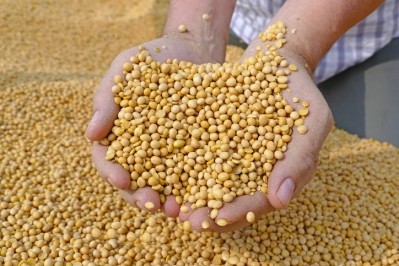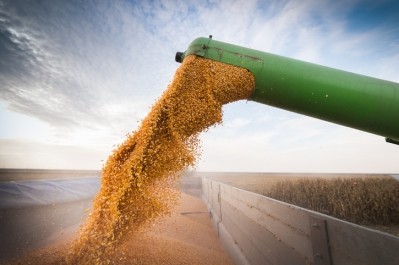WASDE report ‘brings few surprises’

The US Department of Agriculture (USDA) included details about global feed grain trade and production in April’s World Economic Supply and Demand Estimates (WASDE) report released Tuesday (April 10).
Overall, the report brought few surprises said Todd Hubbs, clinical assistant professor in agricultural commodity markets at the University of Illinois. However, the USDA kept predictions for a strong soybean export market that, he added, may be somewhat challenging to realize.
He told FeedNavigator. “We’re going to have to see some strong exports – it’s possible, but it’s going to be a tough one.”
The report also assumes that trade in soybeans would continue with China, he said. However, the US has been behind in its export pace to China all year for several reasons such as soybeans in parts of South America were deemed to have higher protein and oil levels, and the fact there were concerns about the cleanliness of US shipments.
US corn, however, is expected to continue to see strong exports as it is competitively priced and abundant, said Hubbs. “We’ve had the lowest corn price, and we’ve got a lot of corn,” he added.
The export expectation for corn is large, but possible given the export pace, he said. “’We’ve been on a pretty good pace recently and we’re pretty optimistic about it – when you think about the weekly exports for corn for the last four weeks - we’ve been averaging 60m bushels a week – so we’ve really been exporting at a good pace,” he added.
Looking forward, crop planting and progress reports, weather and production in South America could be important elements to consider, he said.
Corn results
The US corn outlook for 2017/18 anticipated reduced use in feed and an increase in ending stocks of 55m bushels, the USDA said. The projected price range for season-average corn price is $3.20-$3.50.
There is some consideration that the US corn market will start to see weather-related premiums, said Hubbs. Planting season is starting in the US, but the Midwest, which produces most of the corn crop, remains cold and wet.
“We think corn prices might move higher,” he said. “We’re thinking about corn prices strengthening as we move through the spring and summer.”
International outlook
Production internationally is expected to decrease, said the USDA. Corn growth in Argentina is down on yield and harvested area and Brazil is expected to see a smaller second-crop corn harvest.
In total, the expected crop for both countries in 2017/18 would be 14.5m tons below the amount produced in 2016/17, the department said.
Globally, corn trade is anticipated to see a drop in export from Brazil and Argentina along with reduced export competition among the countries and the US going into MY 2018/19, the department said. Imports were reduced for Iran, Malaysia, Taiwan, Mexico and Chile with increases forecast for Bangladesh and Turkey.
Foreign ending stocks were reduced by 2.8m tons, the department added.
Soybean stats
US soybean production is seeing an increase in crush along with a drop in ending stocks, the USDA said. Soybean crush is projected at 1.87bn bushels – an increase of 10m supported by soybean meal prices.
Ending stocks were lowered by 5m bushels, the department said. The season average price for soybeans is $9.10-$9.50, while the price for soybean meal increased to $340-360 a short ton.
There remains some uncertainly about soybean prices and production looking forward, said Hubbs. Although the expected acres to be planted were less than anticipated the amount remains large and delayed planting could mean additional acres switch to the oilseed.
“Soybean prices could move lower in the spring and summer,” he said of commodity pricing. However, the results depend on how much is planted and what the competition looks like, he added.
High soybean meal prices likely mean that substitution of the feed ingredient has already started and may account for the increase in price for DDGS, he said.
The global soybean supply saw a 6.1m ton drop based on results in Argentina, India and Uruguay only partially offset by an increase in production in Brazil, the department said. In Brazil, soybean production has been forecast at a record 115m tons, while Argentina is expected to see a drop of 7m tons stemming from dry conditions.
Global trade in 2017/18 is predicted to drop slightly as increased exports from Brazil, Russia and Ukraine are countered by export reductions in Argentina and Uruguay, the department said. Ending stocks were lowered by 3.6m tons.
Feed grain outlook
Wheat ending stocks for the US in marketing year (MY) 2017/18 were increased 30m bushels based on a drop in feed and residual use, the USDA said. Corn is anticipated to continue replacing wheat use in feed rations for the rest of the marketing year.
The season-average farm price remains at $4.60-4.70, the department said.
Globally, wheat supplies also increased based on higher production in Morocco, the department said. There also has been a multi-year drop in use from Iran, which increased carry-in stocks.
Trade for 2017/18 is expected to include increased exports from Russia, Argentina and Kazakhstan, which almost offset a reduction from the EU, the department said. Exports from Russia were predicted to increase to 38.5m tons.
Import predictions were lowered for Morocco, Brazil and Columbia but increased for Algeria, Ethiopia, Japan, Kenya, the Philippines and Turkey, the department said.
World consumption is forecast to increase but use is not expected to offset the additional production, the department said Global ending stocks for 2017/18 have been raised to 271.2m tons – a new record level.
Additionally, barley is anticipated to have a reduced production in 2017/18, the department said.












